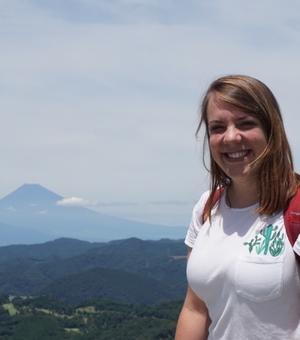Dr Danielle McLean
Research Interests
Tephrochronology, Geochronology, Quaternary Science and Paleoenvironmental Change, Volcanic Histories, Human Evolution
I am a Postdoctoral Researcher in Tephrochronology, based at the Research Laboratory for Archaeology and the History of Art. My research has focused on using sedimentary records (e.g. lake, marine, archaeological sites) from around the globe to understand more about the nature of past environmental change and hazard events. I specialise in the application of tephrochronology; the use of volcanic ash (tephra) layers to date and correlate widely dispersed sedimentary records, to better understand the environmental records they contain. My particular focus has been on the identification of non-visible ash layers (cryptotephra), which are low-concentration deposits that can only be identified microscopically. Cryptotephra are often more valuable than visible ash layers since they can provide precise ties over much wider geographical regions (sometimes even over hemispheric scales), and they can also offer new insight into lower magnitude eruption events that are often poorly preserved near the volcano.
My research interests were founded during my BSc in Geography and subsequent MSc (passed with Distinction) in Quaternary Science at Royal Holloway, University of London. In 2014 I joined the ‘Suigetsu Varve Sediment Project’ and the University of Oxford to undertake my doctorate (funded as part of the NERC Doctoral Training Programme, Cohort 1). My research focussed on the renowned sediments of Lake Suigetsu (central Japan), and showed that cryptotephra layers were four times more frequent than the visible ash layers preserved in the lake. This work established the most comprehensive record of East Asian volcanism to date, and critically ash layers that can synchronise key paleoenvironmental sites, including the Greenland ice cores. The varved lake sediments and consortium outputs are exhibited at the ‘Suigetsu Varve Sediment Museum’ in Fukui Prefecture, Japan. In 2018 I was awarded a Japan Society for the Promotion of Science (JSPS) Summer Placement and was hosted at the Japan Agency for Marine-Earth Science and Technology (JAMSETC), Yokosuka.
In August 2021 I commenced a Leverhulme Trust Early Career Fellowship at the Research Laboratory for Archaeology and the History of Art. This fellowship will use volcanic ash layers to provide new age constraints for archaeological and climate records in NW Africa. The tephra linkages will provide a new opportunity to test the hypothesis that periods of severe climate coincide with key shifts in cultural development that are reflected in the archaeological record.
External Websites
- Reliance or Resilience? Volcanism and the Ancient Maya
- CAVES Africa Project - Agencies of behavioural change in early modern humans in NW Africa
- Google Scholar
- ResearchGate
- Personal Website
- Lake Suigetsu Varved Sediment Core Project
- Suigetsu Varve Museum, Fukui Prefecture
- Cryptotephra Extraction Methodology Video




